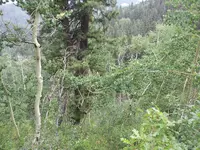Springfield
Silver Member
- Joined
- Apr 19, 2003
- Messages
- 2,850
- Reaction score
- 1,388
- Golden Thread
- 0
- Location
- New Mexico
- Detector(s) used
- BS
Springy,
I know you will enjoy the book.
The thing I look for in a LOST Treasure/Mine Story is what did the person that this happened to do after they lost it? If they kept looking for it for many years, then I put a bit more credence in the story. I have read some in which the finder simply went on to find the next one. REALLY? You find a ledge of exceedingly rich gold ore, then you lose it (but you know the general area it was located in), and then just move on? NO WAY!
Best - Mike
I finished the book today - loved it. There were plenty of good desert gold stories collected from, in many cases, people who were there when the events happened - people who were looking for the gold. Besides the 'lost ledges', there were many other great stories about the early days in the Colorado Desert and the characters who made it happen. I spent part of the winter of '85 camping in that country - I wish I'd known about some of these stories then. I remember at the time that 'anything could be in those hills'. Tough country.
Of course, a major focus of the book is the Lost Pegleg Mine, and this book ought to be considered the bible on the subject. I learned a lot of facts about the subject that were presented in a very convincing way. I'm now a believer that Smith found black gold - in fact, it seems likely there could be more out there beside his discovery.
Bailey is a great writer - too bad he didn't write more - that I'm aware of anyway. I rank him in the same league with Dobie and McKenna.




